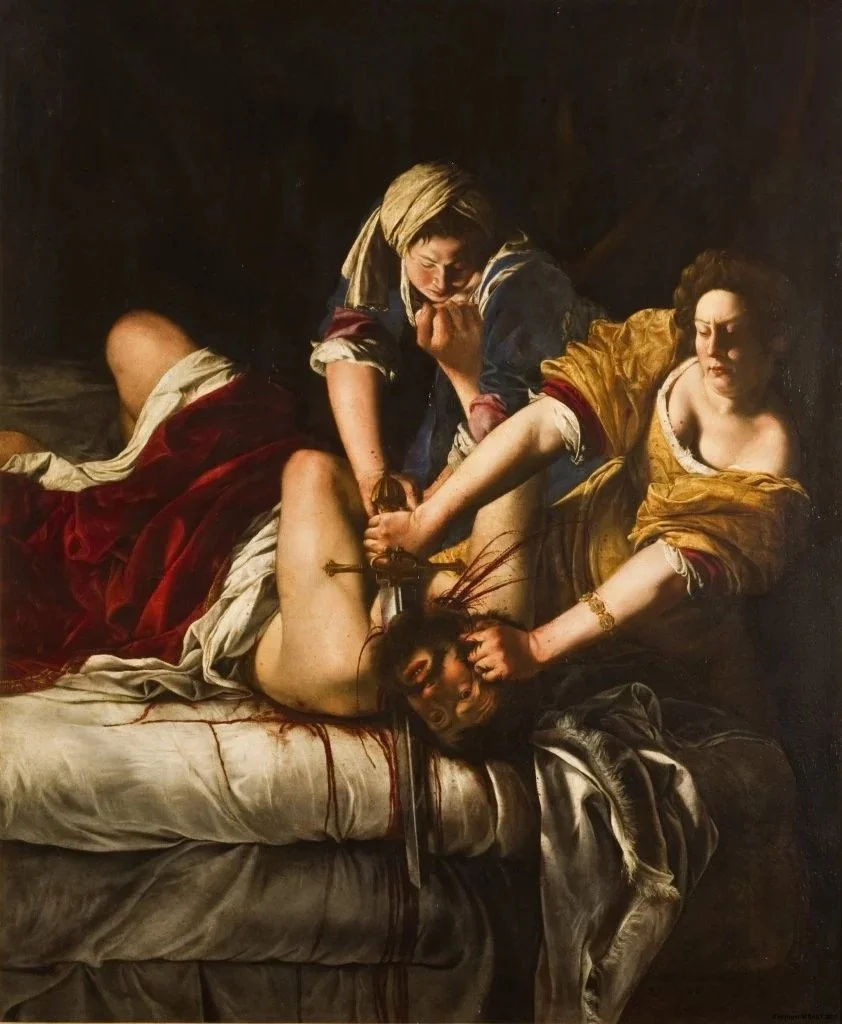Studio Research: Dorothea Tanning
Hey Stranger!
I’m researching multiple artists, and I need to document what I learn about them so I keep it in my memory. I began with reading about Dorothea Tanning. I saw her piece “Notes for an Apocalypse” in New York City about 3 months ago and I felt something just so visceral looking at it and I couldn’t take my eyes off of it. When first gazing at it, I first notice what is clearly representational about the piece. The folds of the tablecloth, the curve of a spine. And the longer you look, the less sense it makes.
I looked at the use of greens on the spine of the first figure, paired with the peach tone on their buttcheek, the way the second body drapes and becomes a part of the folds of the tablecloth. The glowing orb-being-thing. The other limbs, how one is also supposed to be the hair on the first figure’s head.
Something else I notice about it, that says more about what parallels of taste I have in work I obsess over, than anything really meaningful, is I see visual parallels to my favorite historical painting: Artemisia Gentileschi’s Judith Slaying Holofernes. It’s a bit of a jump, because this one is fully representational, and they have different contexts; right down to the time periods they were painted. But I think Gentileschi was one of the painters that Tanning was looking at, and now I’m looking at the both of them.
I just wanted to briefly mention that, back to Tanning. I am reading the book Transformations: Dorothea Tanning by Victoria Carruthers that discusses her life growing up, and life/career as an artist and the full timeline of Dorothea’s work.
So far I find myself relating a lot to Dorothea, which was an insane moment for me. She grew up isolated in the midwest and then one day when she was about 18 or 19 she moved to Chicago, her first big city, and then to New York. Both moves were very risky and she didn’t really have a plan. She just wanted to make art. She was a very maladaptive daydreamer as a child and it kept that innate creative need present and necessary to her life in adulthood. She also loved poetry and writing. What I really admire about her life as an artist in NYC is that if she wasn’t directly making a living from her creative paintings, she was trying to be creative in whatever job she could get. For a time she was a commercial artist for Macy’s ad’s for women’s apparel in the 1940’s. Her figurative work evolved so much over the course of her life but it was present early on, starting with that job.
Also the way she describes her work is so similar in my head to what I want my own artwork to gravitate towards, the direction I want to go in how I write about my work, and how I build imagery with future bodies of work, in particular right now, my thesis.
“[Her] Imagery oscillates between dual or multiple realities: love and hate, violence and tenderness, sound and silence, movement and stasis, representational versus the abstract, [male presenting and fem presenting]. “ She creates multiple realities in the same image that fold in on eachother and evokes a sensation of walking into the middle of a scene changing— a transformation in the physical, emotional, and psychological sense. She states her interest in fluid and hybrid spaces in between realities, “places of infinite possibility, as they act as metaphors for the imaginative and creative process itself” I like to call this: Liminal Space— meaning ‘in between’ something, and that’s what my mind calls it, I understand the space Tanning speaks of well. She conveys a feeling that I think everyone can feel and experience in their own capacities. If you are not following, possibly you’re like, this doesn’t make any sense!
For me, Tanning’s artwork perfectly captures moments in life where a person is in different stages of a metamorphosis, I obsess over times in my life that have spiraled into complete nonsense, whether that be negative, positive, or neutral. Change can be difficult for me, as is letting go. When everything completely falls apart, including myself, it is my experience that there’s hints of something new bursting through. But you cannot see the bigger picture yet. It is in this nexus of reality as I know coming undone, where I truly meet myself. Not at moments of success, at moments where everything I understand is uprooted in one way or another. This feeling is what I want my work to be about. These moments of violent external/internal shifts in my reality and how I understand it, have changed me so fundamentally. I can identify times in life where a whiplash of a change would occur, and suddenly, I don’t know myself anymore. I have to rebuild, and not only that but I have to allow the time and space for it to happen and get to know this new person and feel like nonsense walking on two legs, like the figures in Tanning’s works. I want to visually tell my moments of transformation, and I too, want to make images that deconstruct and question the way I am tethered to a thin veil of reality. Tanning reveals a subconscious and intimate feeling, there’s a perverse nature to her pictures. Bodies and limbs contort and twist. They move and they collapse onto eachother, and transform into something new. I understand this experience well in my life, in the choices I’ve made, in interpersonal relationships, with myself, and so forth. It’s a feeling I obsess about. And I have yet to hit the mark on that perfect ‘in between space’ in my art yet. But that’s what the journey is for.






